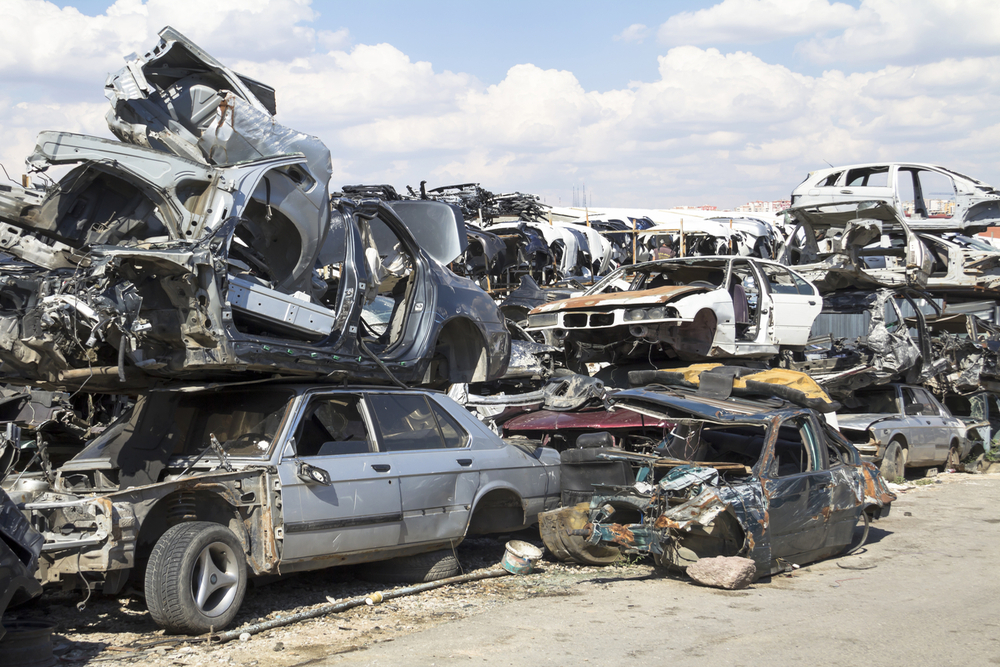Limited Incentives May Restrict Scrappage: Crisil
Under the proposed policy, a scrapped vehicle will be offered a monetary value close to 4-6% of the showroom value

Limited incentives and poor cost economics for trucks in the Vehicle Scrappage Policy, coupled with lack of addressable volumes for other segments is unlikely to drive freight transporters to replace their old vehicles with new ones, Crisil Research report said on Wednesday.
Though the scrappage volume of buses, PVs and two-wheelers are expected to be limited as well, the policy's impact on new Commercial Vehicle (CV) sales could be sizable, based on addressable volume, the rating agency said in its report.
Under the proposed policy, a scrapped vehicle will be offered a monetary value close to 4-6 per cent of the showroom value. There could even be up to a 5 per cent discount on the purchase of a new vehicle if a scrap certificate is produced.
Additionally, it also offers a 25 per cent discount on road tax, among others.
It also proposes to de-register vehicles that fail fitness tests or are unable to renew registrations after 15-20 years of use.
According to Crisil, in the bus segment, many buses owned by state transport undertakings will have a life of over 15 years. In comparison, buses operated for intercity, staff, school, and tourist segments typically do not have a life beyond 15 years, and would thus be outside the ambit of the scrappage policy.
Crisil Research estimates that around 45,000 buses, largely owned by STCs, could be scrapped and replaced, it said.
Assuming a three-year window, starting April 2022, scrappage of around 15,000 buses annually could result in 15-20 per cent incremental new bus sales – based on the average of around 90,000 buses sold between fiscals 2016 and 2020.
This, however, would depend on the state government's wherewithal to purchase new vehicles and therefore will be monitorable, Crisil Research said.
As for the passenger vehicles, renewal of registration fees is proposed to increase from Rs 600 to Rs 5,000 (valid for five years) for PVs older than 15 years, a hike of over eight times.
However, these vehicles mostly ply in the rural areas where enforcement of higher registration fees is difficult to monitor. The potential benefit from scrapping a 15-year-old, entry-level small car will be Rs 70,000, whereas its resale value is around Rs 95,000. That makes scrapping unattractive, said the report.
But for vehicles older than 20 years, considering that there is a proposal to deregister them, the potential scrappage benefit is around Rs 50,000, which is similar to its resale value. That can incentivise scrapping, the report stated, adding as a result, 40,000-60,000 PVs can realistically be scrapped.
Therefore, the incremental contribution to new vehicle sales works out to 12,000 to 20,000 PVs annually, assuming a three-year window. As the number is less than 1 per cent of the 30 lakh units sold on average over fiscals 2016-2020, scrapping will not contribute substantially to new sales, said the report.
In the case of two-wheelers, according to the report, while the fees for the renewal of registration are proposed to increase from Rs 300 to Rs 1,000 (valid for five years) for vehicles older than 15 years, the cost burden in absolute terms is minimal.
For two-wheelers, the policy could incentivise scrappage of vehicles older than 15 years with a net benefit of Rs 3,000-4,000 (comparing total potential benefit on scrapping vs resale value).
However, the majority of two-wheelers do not have a life beyond 15 years and volumes (assuming scrappage over a three-year period) would account for only around 1-2 per cent of the five-year average annual new sales volume of around 185 lakh, according to Crisil Research.
The scrappage policy, therefore, will provide no significant lift to sales of two-wheeler manufacturers.
In medium and heavy commercial vehicles (MHCVs), though, the potential scrappage volume is significant, it is estimated that around 5.1 lakh MHCVs (> 7.5-tonne gross vehicle weight segment) are older than 15 years and hence, could potentially be destined for the scrapyard.
Crisil said it gauged the scrapping potential of around 18.5 tonne GVW medium commercial vehicles with a sticker price of Rs 18-19 lakh in Maharashtra (erstwhile 16.0 tonne GVW trucks) that are more than 15 and 20 years old.
This segment comprises around 20 per cent share of the 5.1 lakh CVs older than 15 years. The insights from this analysis are applicable to the other CV segments as well, it said, adding two scenarios have been reviewed to assess the benefits the scrappage policy will provide.
In the optimistic scenario, the potential benefit of scrapping a 15-year-old CV, and its resale value are similar. As the age of the vehicle increases, the benefit reduces, while incentives increase. That's because, the resale value of a 20-year-old truck is less compared with a 15-year-old truck, so scrapping makes sense, according to the report.
However, in the base case, the potential benefit is less than the resale value of the truck, so scrapping does not make sense, it added.
According to Crisil, the financial burden after replacement increases significantly, hence even in its optimistic scenario, it does not see much traction for the policy from an incremental demand perspective.
Also, to boost scrapping volume, it was proposed by the Ministry of Road Transport and Highways in January that the Centre should direct state governments to impose 10-25 per cent green tax on old vehicles at the time of renewal of a fitness certificate.









